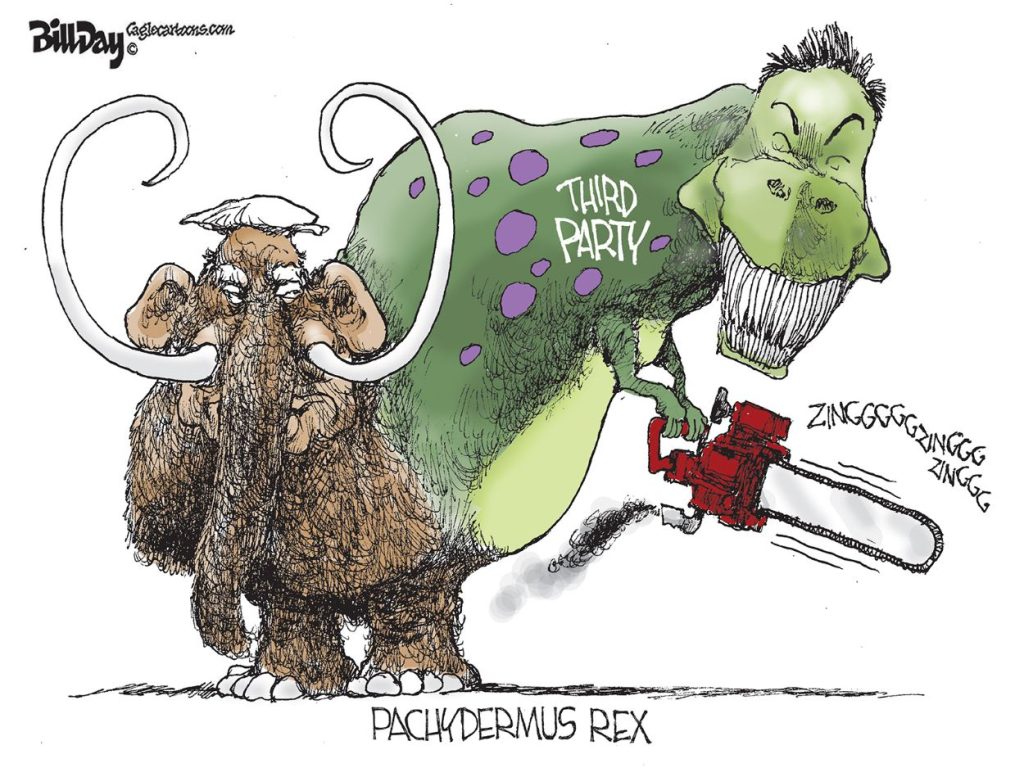Brown University announced this week that over the next 11 years, it would give the Providence, Rhode Island, city government $31.5 million to help deal with its budget crises. It is the latest example of a voluntary PILOT payment.
As we’ve written previously, several city governments are negotiating with their large nonprofit institutions for voluntary payments-in-lieu-of-taxes as a partial offset for the city services they receive but for which they pay no property taxes.
Providence Mayor Angel Taveras said the agreement represented “a renewal of our shared willingness to work together to make both Brown and Providence successful.” Under the agreement, Brown will pay the city an additional $3.9 million in the current fiscal year, which ends June 30, bringing to $8 million the university’s total annual contribution to municipal coffers.
As cities’ budget crises deepen, they are looking for new revenue sources and voluntary PILOT payments are getting more and more attention. Providence and Boston have looked for its private universities for the voluntary payments, and a proposal in Pittsburgh to charge a one percent tuition tax created a political firestorm and was abandoned.
A Little Help From My Friends
Also, last week, the Providence mayor announced an arrangement with Lifespan, a local hospital system, to pay $800,000 annually over three years. In February, Johnson & Wales University said it would give the city as much as $11.4-million over the next decade. The new payments are on top of $50 million that private colleges, including Brown and Johnson & Wales, pledged in 2003 to give to the city over 20 years.
The president of Brown University said: “Brown is deeply concerned about Providence’s financial situation and is committed to supporting efforts to enhance the city.”
Here, we all know about the oft-used PILOTs that waive $50 million a year in city and county property taxes for companies promising jobs and construction. Less know are PILOTs paid by utility companies, including MLGW, to Memphis and Shelby County in return for its tax-exempt status.
PILOT payments for nonprofits tend to be voluntary because of the considerable influence of tax-exempt institutions like Harvard University and Yale University, which pay their local governments $5 million and $7 million respectively. MIT, Princeton University, and the University of California at Berkeley pay more than $1 million.
Co-Pay
In addition, a number of the leading hospitals in the U.S. are making payments, such as Johns Hopkins which agreed to pay $10.4 million over four years in 2001 as an alternative to the city-proposed energy tax.
In Pittsburgh, a voluntary PILOT from University of Pittsburgh and Carnegie Mellon University was increased in return for the city’s elimination of a plan to pass a 1% tax on all tuition paid by college students. In some states, budgetary woes have sparked discussions in their legislative bodies, notably Hawaii and Georgia, about eliminating various nonprofits’ tax exemptions, but so far at least, it seems more like a shot across the bow to get the nonprofits to the negotiating table more than anything else.
The executive director of the Indiana Association of Cities and Towns said: “We’re having to look at the public services nonprofits use and how we can adequately cover those costs. We can’t give them away for free any longer.” That said, it’s no denying that the nonprofits themselves are hurting as a result of the recession, but looking for the time when financial trends get more favorable, more cities, counties and states are at least putting the issue squarely on the table.
There was a time when Philadelphia had the most aggressive “payments-in-lieu-of-taxes and services-in-lieu-of-taxes.” There, nonprofits owned 25.2% of city property with an assessed value of $3.1 billion, but they were exempt from $45.6 million in property taxes and $55.1 million in school district taxes. Under a program begun in 1994, 42 “voluntary contributions” agreements were negotiated, generating $2.9 million in cash and $3 million in contributed services to city government. The Philadelphia school district received $3.5 million in cash. However, payments winnowed down to less than $1 million a year after a state law calmed fears from the nonprofits that their tax-exempt status was at risk unless they paid the voluntary PILOTs.
Banking On It
Although payments are voluntary, city governments are certainly in a strong position to encourage them since they have authority over zoning, permitting, and code enforcement. Meanwhile, the nonprofits are consumers of public services, including roads, fire protection and law enforcement.
According to a report by the Lincoln Institute of Land Policy, nationwide, the tax exemption for nonprofits could total as much as $32 billion. The report – the most comprehensive account of PILOT programs in use – said that since 2000, 117 cities and 18 states have used PILOT programs to increase their revenues. While PILOTs remain a revenue source worth pursuing, it must be methodical and justifiable, correcting processes that have been haphazard, secretive and ad hoc.
Remember the anecdote about prolific bank robbery Willie Sutton being asked why he robbed banks. His answer: “Because that’s where the money is.” That too is why cities are targeting hospitals. Although they make up only 0.6% of the nonprofits registered with the IRS, hospitals account for 40.2% of the revenues and have 24.3% of the assets. By way of comparison, higher education makes up 0.4% of nonprofit organizations, generates 10.9% of revenues and holds 17.9% of assets.
Accompanying new interest in voluntary PILOTs for nonprofit hospitals is a renewed interest in determining if they are meeting states’ charitable standards. Already, this has produced rules in Utah requiring charity care plans, for publicizing the opportunity for charity care and for providing charity care commensurate with the value of their property tax exemptions. In a few places, there have been questions about why nonprofit hospital executives are making seven-figure salaries, but so far, that’s been a minor theme.
Tax-Exempt
The momentum behind this new interest in taxing nonprofits comes from city budget officials who face bleak options for the future. The National League of Cities reports that pessimism about meeting city fiscal needs is at its highest level and budget shortfalls are expected to worsen through 2012.
According to the Lincoln Institute study, nonprofits in Memphis have 1.9% of the total property value in Memphis, which seems low to us and we’re trying to double check it. The report characterized it as a rough estimate. We suspect it is low, but the bigger issue for City of Memphis is the vast areas of Memphis that do not produce any property tax revenues, the combination of tax waivers for businesses, nonprofit hospitals, and universities and colleges.
It’s getting harder and harder to balance City of Memphis budgets, and the fact that about 30% of Memphis is tax-exempt only compounds the degree of difficulty.
The case in support of the PILOTs is pretty direct: nonprofits should pay for the public services they consume. Based on the lessons of several cities, it seems that a carrot rather than stick approach could yield the best results. There’s little question to us that most of the nonprofits here that would qualify for a PILOT payment have well-developed civic consciences and an appeal to community responsibility is the best way to raise this subject with them.





That would be a nice gesture. Anyone able to breakdown the 1/3 tax exempt tabulation to show percentages by specific uses/ownership? City/county, public schools, state, federal, MLGW, religious organizations, hospitals, universities and colleges- it all must add up quickly. I would hardly suggest major contributions from any of them and I suspect that the value most invest in the community via free services and social support. However, even a small contribution from each organization could be a sizable sum. Similarly, would it not be possible to at least ask corporations that have received PILOTs over the years if they would be willing to increase their annual payments by some margin. Perhaps organizing a non-profit or conservancy model to support additional parks, schools and even city services would allow these corporations to separate such payments from their profit margins under the guise of civic contributions come tax time. I would have no problem with a fire truck sporting a Mitsubishi logo or the sign at Marquette Park being supplemented with additional signage noting Cargill’s generous support of the city’ public park system. We already have AutoZone Park and FedEx Forum – why not take it a step further?